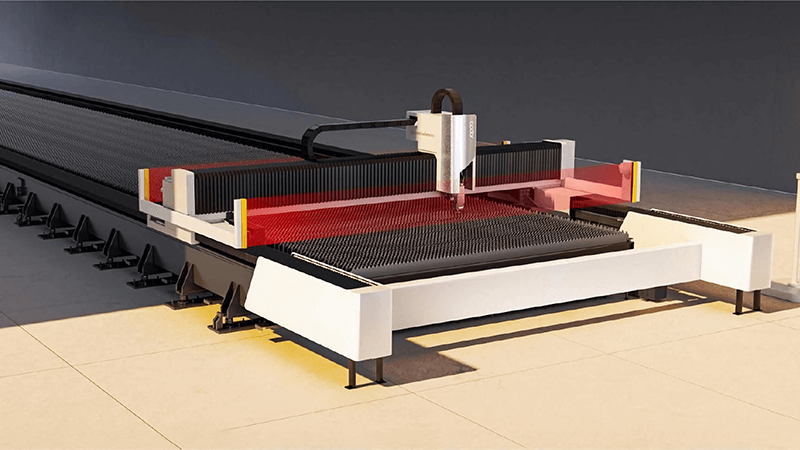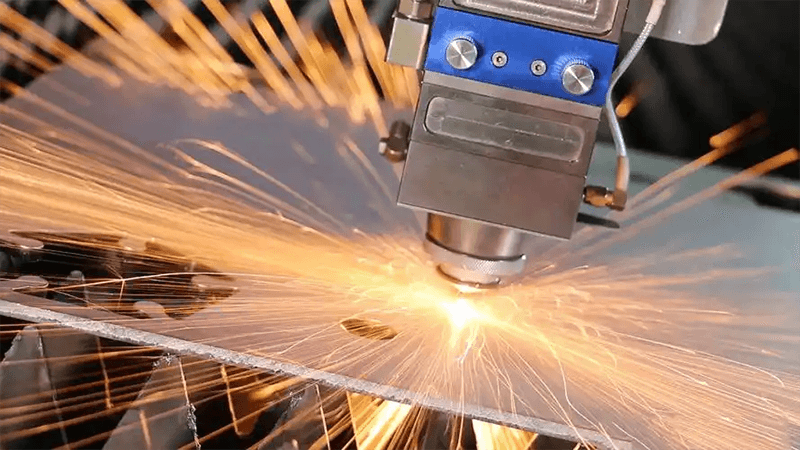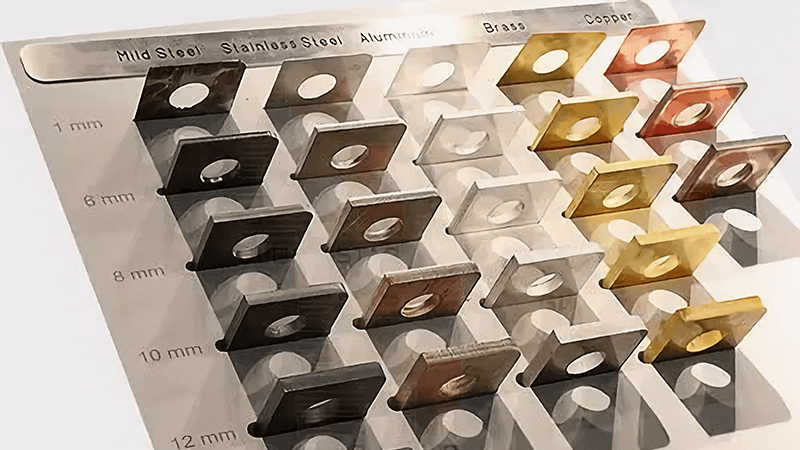Starting a fiber laser cutting business can feel overwhelming. You may face questions about machines, markets, and profits. Yet with the right strategy, you can turn uncertainty into a clear path toward a profitable operation.
You can start a fiber laser cutting business by choosing the right machine, defining your target market, setting up safe operations, and promoting your services effectively. A solid plan reduces risks and helps you reach profitability faster.
Many first-time owners get stuck on equipment choices or marketing. But once you know who you want to serve, which metals you cut, and how you deliver value, everything else—from selecting the right fiber laser to building a reputation—becomes far less intimidating.

How to start a laser cutting business?
When I first explored fiber laser cutting, I remember the confusion about machines, safety, and customers. Many people get stuck there. They worry about costs, technical skills, and competition. But if you follow simple steps, you can start with confidence.
To start a laser cutting business, you should identify your target customers, select the right fiber laser machine, set up a safe and efficient workspace, and market your services to build trust and visibility. A step-by-step approach keeps the risk low.
Step 1: Identify your market
Before you think about machines, you must decide who you serve. Some businesses cut stainless parts for local manufacturers. Others focus on custom art1, signage, or furniture. Your target market shapes every choice you make.
Step 2: Choose the right fiber laser
Not all machines are equal. At Kirin Laser, we help clients select machines that match their workload. A company cutting thin stainless daily needs a different setup than a shop cutting thick steel plates. Power, table size, and automation matter.
Step 3: Prepare your workspace
Safety is key. A proper exhaust system, training for operators, and steady electricity are essential. Skipping this step can slow you down and put people at risk.
Step 4: Build your brand
Clients only trust you when they know you can deliver. Start with a professional image. Use simple case studies or testimonials. One client of mine was losing orders because he outsourced all cutting. After setting up his own Kirin fiber laser cutter2, he cut parts in-house and regained his old customers.
| Key Step | Why It Matters | Example Action |
|---|---|---|
| Identify Customers | Defines machine needs and pricing strategy | Focus on stainless steel shops |
| Choose Machine | Matches production needs with capabilities | Select 3kW fiber laser cutter |
| Prepare Workspace | Ensures safety and long-term reliability | Install exhaust and training |
| Build Brand | Creates visibility and credibility | Share before-and-after projects |

Is a laser business profitable?
Many people worry about profit margins. They fear high costs and slow payback. I often remind them: it depends on setup, market, and discipline. If you choose the right projects and control overhead, fiber laser cutting can be very profitable.
A fiber laser cutting business is profitable when you target industries with high demand, control your costs, and run your machine efficiently. Profit margins are higher when you cut in-house instead of outsourcing, and many shops recover their investment in one to two years.
Breaking down profits
Fiber lasers3 are expensive, but they run fast and require less maintenance than alternatives. That lowers the long-term cost.
Common profit drivers
- In-house production: One of my clients stopped outsourcing cutting. This saved him both money and time. He won back old customers with faster delivery.
- Niche markets4: Custom signage, industrial brackets, and stainless furniture all bring higher margins when targeted well.
- Reduced waste: Fiber lasers use less power and cut with high precision. Less scrap means higher profits.
Risk factors
You must watch supply costs, tariffs, and competition. A clear pricing model protects margins.
| Profit Driver | Impact on Business | Example Scenario |
|---|---|---|
| In-house cutting | Higher margins | Stop outsourcing stainless steel parts |
| Custom products | Premium pricing | Custom furniture and signage |
| Energy efficiency | Lower overhead | Fiber laser vs CO2 laser savings |
| Faster turnaround | More customers | Same-day delivery of urgent parts |
In my own journey with Kirin Laser, I always tell folks: nail down who you serve first. Once that is clear, the right fiber laser machine almost pays for itself in time saved and projects secured.

Where to sell laser cut items?
People often ask me, “Where do I find customers?” They may have a great machine but no clear sales channel. That fear is real, but solutions are simple. There are many ways to sell if you match your product with the right platform.
You can sell laser cut items by targeting local manufacturers, online platforms, B2B marketplaces, and trade shows. Matching your product with the right channel increases your visibility and helps you build long-term client relationships.
Local manufacturers
Many small shops need parts but cannot justify buying their own fiber laser5. They are steady customers if you build trust.
Online platforms
Websites like Etsy, eBay, or Amazon Handmade work for custom art, signage, and furniture. You must showcase quality photos and clear delivery terms.
B2B marketplaces
Alibaba, ThomasNet, and other industry directories help you reach buyers worldwide. This is especially useful for bulk orders.
Trade shows
Face-to-face trust still matters. A small booth with product samples attracts real buyers.
| Sales Channel | Product Type | Example Benefit |
|---|---|---|
| Local Manufacturers6 | Industrial parts | Steady long-term orders |
| Online Platforms | Custom art and signage | Global reach with small investments |
| B2B Marketplaces | Bulk industrial products | Higher volume, repeat orders |
| Trade Shows | Mixed items, new launches | Build brand recognition |
At Kirin Laser, I have seen clients succeed by mixing channels. One client focused on local stainless steel factories but also sold small art pieces online. This balanced his cash flow and built resilience during slow periods.

How much does a laser cutter make?
This is the question that everyone asks at the start. They want certainty before they invest. The truth is simple: income depends on machine usage, customer demand, and pricing. Some shops make steady local income, others scale to six figures.
A laser cutter can make anywhere from a few thousand dollars per month in small markets to well over six figures annually in industrial sectors. The revenue depends on workload, machine capacity, and your ability to secure repeat clients.
Factors that shape income
- Machine power7: A 1.5kW fiber laser may handle thin sheets but limit your orders. A 6kW machine unlocks heavy steel contracts.
- Workload: Running two shifts doubles income potential. Idle time reduces it.
- Market type8: Custom art brings higher prices but less volume. Industrial cutting is steady but competitive.
Income examples
- A small shop cutting signage: $3,000–$5,000 monthly.
- A medium shop serving manufacturers: $8,000–$15,000 monthly.
- Large operations with multiple machines: $100,000+ annually.
| Machine Setup | Market Focus | Income Range |
|---|---|---|
| 1.5kW entry-level | Local custom signage | $3k–$5k per month |
| 3kW medium | Small manufacturers | $8k–$15k per month |
| 6kW+ high power | Large industrial clients | $100k+ annually |
In my experience, those who treat laser cutting as a long-term business do best. They focus on relationships, steady orders, and reliability. That builds consistent income over time.

Conclusion
Starting a fiber laser cutting9 business is less about machines and more about clarity. You must know who you serve, what you cut, and how you deliver. With the right fiber laser, a safe setup, and clear sales channels, profits follow. At Kirin Laser, I have seen clients move from struggling with outsourcing to thriving with in-house production. The opportunity is real, and the path is clear if you take it step by step.
-
Discover how laser cutting enhances the creation of custom art, providing unique insights and inspiration for artists. ↩
-
Explore this link to understand the technology behind fiber laser cutters and their applications in various industries. ↩
-
Explore the advantages of fiber lasers, including speed and maintenance savings, to enhance your production efficiency. ↩
-
Learn strategies for targeting niche markets effectively to maximize your profit margins and grow your business. ↩
-
Discover how fiber lasers can enhance precision and efficiency in manufacturing, making them a valuable investment for small shops. ↩
-
Exploring this resource will provide insights into how local manufacturers can enhance your business relationships and reliability. ↩
-
Understanding how machine power affects income can help you make informed decisions about investments and growth in your laser cutting business. ↩
-
Exploring the relationship between market type and income can provide insights into pricing strategies and target markets for your laser cutting services. ↩
-
Finding the best laser cutting machines and laser cutting solutions from Kirin Laser, clicking this link to get all your needs. ↩





